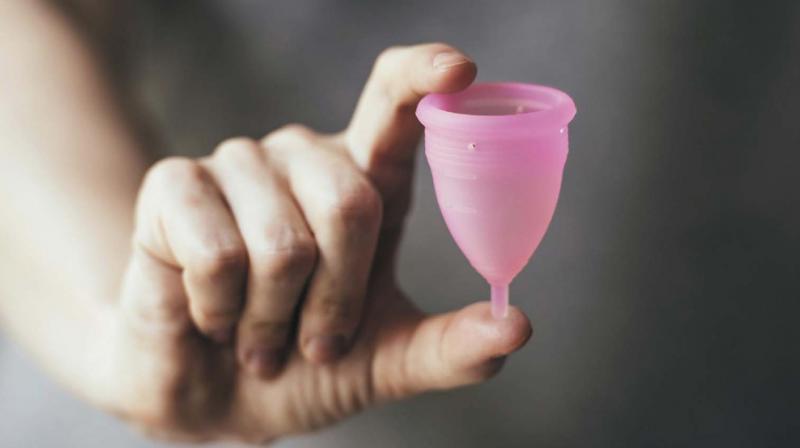Women, this can be your cup of tea

Recently when a woman journalist Manila C. Mohan, through the pages of the weekly regional magazine where she works, talked about ‘menstrual cup’, there was a flurry of enquiries. She said that menstrual cup would be an ideal replacement for sanitary napkins and tampons. Though the cup, made of medical grade silicone and shaped like a bell, is fast catching up among Malayali women, sadly a majority of gynaecologists are yet to hear about it. 37-year-old Manila happened to see a Youtube video about the menstrual cup, and that led her to buy it from a leading online website for Rs 600. After three months of using it, she decided to enlighten her readers about it. She said it was flexible and was worn inside the vagina to hold menstrual blood. Once full, it could be emptied into the toilet/sink, washed and re-inserted with ease. Manila vouches that the revolutionary cup is safe and the biggest advantage is its environmental benefits compared to the disposing of sanitary napkins/tampons.
“After each menstrual cycle, the cup has to be sterilized. The next month you can re-use it and there is no fear of catching any vaginal infection”, said Thrissur Kanimangalam native Manila. On enquiry, she found that HLL Lifecare Ltd, which comes out with an array of healthcare products, is yet to come out with a cup. But a top official at HLL Lifecare Ltd told DC that they were seriously considering the proposal. However, a Thrissur-based private company, Earth Care Solutions, which caters to waste management services has been manufacturing VCup since 2014. A. Rajesh, Chief Operating Officer of the company told DC that it was available in three colors (white/transparent, pink and green) and came in a cotton pouch with accessories like hand sanitizer pen, coin tissues and soap strips.
“A school teacher told me that the drainage had to be broken every year because it got clogged with sanitary napkins. This led me to think of an eco-friendly alternative for sanitary napkins and on research I realized there was a menstrual cup which was being widely used abroad”, said Rajesh who holds a masters in environmental science. Since 2014, Rajesh has sold more than 1200 menstrual cups in all the metros through Amazon and Snapdeal online sites. Recently he had exported 100 pieces to Poland. Rajesh manufactures Vcup in Mumbai as importing the machinery to Kerala was expensive and cumbersome. “VCup can be used easily for 10 years. It is environment friendly but not bio-degradable, because when the menstrual cup is incinerated, it gives out silicon dioxide. But the surprising fact is that women in Malappuram district have bought the maximum number of menstrual cups from us. Thanks to a few teachers there who gave mouth to mouth publicity in various schools”, added Rajesh who vouches for its efficacy.
G. Rejitha, project co-ordinator at SAKHI is ‘evangelical’ when she talks about the cup as she has got only positive vibes to share. “It was during a US trip that a Gujarati woman introduced it to me. I have been using it for more than five months now and my experience has been excellent. Once the fear of inserting the cup fades, it is very easy and convenient”, said Rejitha. But when DC spoke to three of the leading gynaecologists in the State, they were not familiar with the cup. “I am hearing it for the first time as none of my patients have come to me with such a request. I don’t think it is being widely used in Kerala”, said Dr. K. Jayakrishnan, chairman of KJK Hospital in Nalanchira in the capital city.
But another gynaecologist expressed apprehension about the risk of women getting uterine and pelvic cancer. But there was no evidence to back this. According to Sinu Joseph, a menstrual hygiene educator, the usage of sanitary napkins among rural Indian women ranges between 35 percent and 57 percent. This Bengaluru-based women’s activist told DC that the usage of sanitary napkins among rural adolescent girls was high and could go up to 80 percent. “It is also higher among urban adolescent girls and women. Unfortunately there has not been a specific study among the women in Kerala”, said Sinu Joseph to DC.
Menstrual cup facts
A menstrual cup is a feminine hygiene product made of high quality silicone. It has to be worn inside the vagina during menstruation to collect menstrual fluid. Unlike sanitary napkins and tampons, the menstrual cup collects menstrual fluid rather than absorbing it. One might not succeed in inserting the menstrual cup perfectly the first time, but after a few tries it will be successful.
Most brands have different sizes, small and large, the smaller ones mostly recommended for women under 30 and larger ones for women above 30 years old old.
If properly inserted, the cup will not cause any discomfort to the vagina or cause leakages.
Usage instructions
The cup can be used for 4 to 12 hours before removing and washing it. While on periods, it can either be washed with normal water or with non-fragrant mild soaps.
After the periods, select a proper sterilisation process. It can be boiled and stains removed. It is better to rub a bit of baking soda and cold water.
The cup can be stored in its drawstring bag until next usage. One cup can be used for around 10 years.
Risk of toxic shocks
The long-time use of sanitary pads and tampons is associated with toxic shocks, a life-threatening bacterial infection. Menstrual cups are comparatively safer. However, in studies worldwide, cases of toxic shocks have been reported with the use of menstrual cups as well.

